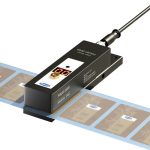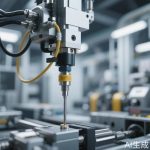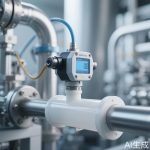In an era defined by technological advancement, pressure sensor technology stands as one of the most critical yet often overlooked innovations shaping our daily lives. From healthcare to automotive systems, industrial automation to consumer electronics, these tiny devices work silently behind the scenes, converting physical pressure into precise electrical signals that enable smarter, safer, and more efficient operations. As industries continue to embrace automation and connectivity, the role of pressure sensors has never been more vital.
The fundamental principle behind pressure sensors is both elegant and sophisticated. These devices measure the force exerted by liquids or gases, translating it into quantifiable data that can be monitored, analyzed, and acted upon. Modern pressure sensors utilize various technologies, including piezoresistive, capacitive, and optical sensing methods, each tailored to specific applications and environments. Whether it’s monitoring tire pressure in a vehicle or ensuring the safety of a medical ventilator, these sensors deliver accuracy and reliability under demanding conditions.
In the automotive industry, pressure sensors are indispensable components enhancing both performance and safety. They are integral to systems like tire pressure monitoring systems (TPMS), engine management, and advanced driver-assistance systems (ADAS). By providing real-time data on factors such as air intake pressure and brake fluid levels, these sensors help optimize fuel efficiency, reduce emissions, and prevent accidents. As the world shifts toward electric and autonomous vehicles, the demand for even more advanced pressure sensing solutions continues to grow.
Healthcare is another field where pressure sensor technology is making a profound impact. From non-invasive blood pressure monitors to ventilators and infusion pumps, these devices ensure precise measurements critical to patient care. In respiratory devices, for instance, pressure sensors help maintain optimal airflow, while in diagnostic equipment, they enable accurate readings for conditions like sleep apnea. The reliability of these sensors can often mean the difference between life and death, underscoring their importance in modern medicine.
Industrial applications of pressure sensors are equally transformative. In manufacturing and process control, these devices monitor and regulate parameters such as fluid levels, compression, and vacuum conditions. This not only improves operational efficiency but also enhances safety by preventing overpressure scenarios in pipelines and reactors. With the rise of Industry 4.0, pressure sensors are increasingly integrated into IoT networks, enabling predictive maintenance and real-time data analytics for smarter decision-making.
Consumer electronics have also benefited significantly from advancements in pressure sensor technology. Smartphones, wearables, and home appliances now incorporate these sensors to enable features like altitude tracking, water resistance detection, and touch-sensitive controls. In wearable devices, for example, pressure sensors can monitor environmental changes or track fitness metrics like elevation gain during workouts, adding layers of functionality that enrich the user experience.
Looking ahead, the future of pressure sensor technology is brimming with possibilities. Innovations in materials science, such as the use of graphene and other nanomaterials, promise even greater sensitivity and durability. Meanwhile, the integration of artificial intelligence and machine learning will enable these sensors to not only collect data but also interpret it, paving the way for fully autonomous systems capable of adaptive responses. As technology continues to evolve, pressure sensors will undoubtedly remain at the heart of innovation across countless industries.
In conclusion, pressure sensor technology may operate behind the scenes, but its impact is unmistakable. By enabling precision, efficiency, and safety across diverse applications, these unassuming devices are driving progress in ways both seen and unseen. As we move further into a connected and automated world, the importance of reliable and advanced pressure sensing solutions will only continue to grow, solidifying their role as a cornerstone of modern technology.




Leave a Message